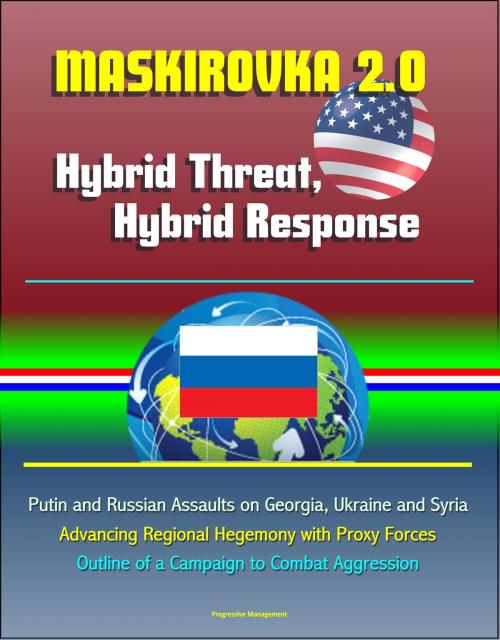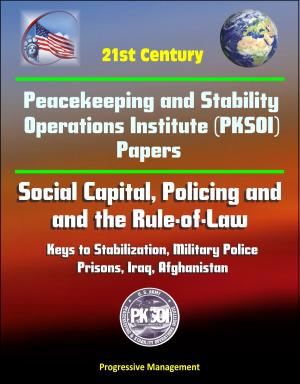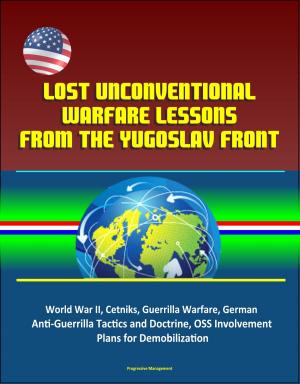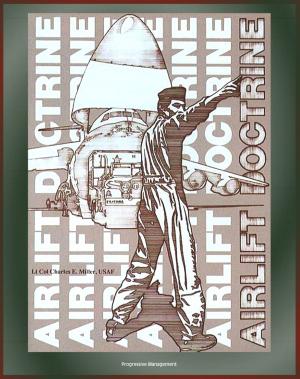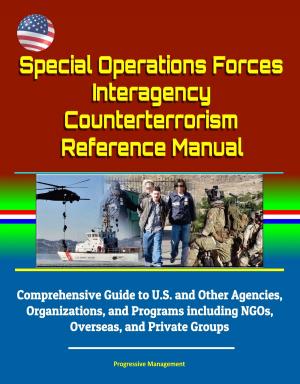Maskirovka 2.0: Hybrid Threat, Hybrid Response - Putin and Russian Assaults on Georgia, Ukraine and Syria, Advancing Regional Hegemony with Proxy Forces, Outline of a Campaign to Combat Aggression
Nonfiction, History, Military, Strategy, Asian, Russia| Author: | Progressive Management | ISBN: | 9781370957057 |
| Publisher: | Progressive Management | Publication: | March 19, 2017 |
| Imprint: | Smashwords Edition | Language: | English |
| Author: | Progressive Management |
| ISBN: | 9781370957057 |
| Publisher: | Progressive Management |
| Publication: | March 19, 2017 |
| Imprint: | Smashwords Edition |
| Language: | English |
Professionally converted for accurate flowing-text e-book format reproduction, this thought-provoking paper describes the irregular and hybrid tools and techniques that Russian President Vladimir Putin and his security and intelligence forces have used, first in the attack against Georgia in 2008, then in the assault on Ukraine, and now in Syria, to advance renewed Russian regional hegemony and strategic reach. The paper also describes the mobilization of Russian minority populations, the co-option of the Georgian and Ukrainian regimes, and the West's seeming inability to effectively counter these Russian moves.
In response to the European moves, the paper will describe some joint, interagency, international, and multilateral options the West should consider implementing to combat this threat, and finally, it advocates that the U.S., North Atlantic Treaty Organization (NATO), and the European Union (EU) employ these and other options to roll back Russian adventurism and reinvigorate the vision of a "Europe Whole and Free." Since the paper was in its near final form when Russia moved into Syria, the assessment of Russia's Syrian adventure is still very speculative at this time. Nevertheless, many aspects of the Syrian case are fully congruent with Russia's hybrid approach in Georgia and Ukraine.
The word Maskirovka is an umbrella term used to describe the focused application of a series of tactics and procedures that the Red Army held as core doctrinal principles. These included the overarching concept that friendly military actions should always be concealed from the enemy for as long as possible, and that a commander's intent should always be masked to improve chances of tactical and operational level surprise, to keep the enemy off balance, and to create opportunities for military breakthroughs as a result of the hoped-for chaos in the enemy ranks and leadership. Skillful Maskirovka helped the Soviets achieve strategic surprise on a number of occasions during World War II.
The family of capabilities that composed traditional Maskirovka included camouflage, deception, denial, subversion, sabotage, espionage, propaganda, and psychological operations. Maskirovka 2.0 is a continuation of the old military approach, to which we must add new whole-of-government tools, such as: coercion, media manipulation, the employment of fossil fuel energy access and price as a weapon, cyber-attacks, political agitation, use of agents provocateurs, the deployment of military forces in clandestine status, and the development of surrogate forces by providing arms, equipment, training, intelligence, logistic support, and command and control. Additionally, Maskirovka 2.0 relies on secret diplomacy and extensive low visibility and/or clandestine preparation of the political, military, economic, and informational landscapes. These preparatory actions seem to have set the stage for Syria. The blending of these old and new capabilities provides Russia a sophisticated hybrid warfare capability which she is using to reestablish her empire.
Professionally converted for accurate flowing-text e-book format reproduction, this thought-provoking paper describes the irregular and hybrid tools and techniques that Russian President Vladimir Putin and his security and intelligence forces have used, first in the attack against Georgia in 2008, then in the assault on Ukraine, and now in Syria, to advance renewed Russian regional hegemony and strategic reach. The paper also describes the mobilization of Russian minority populations, the co-option of the Georgian and Ukrainian regimes, and the West's seeming inability to effectively counter these Russian moves.
In response to the European moves, the paper will describe some joint, interagency, international, and multilateral options the West should consider implementing to combat this threat, and finally, it advocates that the U.S., North Atlantic Treaty Organization (NATO), and the European Union (EU) employ these and other options to roll back Russian adventurism and reinvigorate the vision of a "Europe Whole and Free." Since the paper was in its near final form when Russia moved into Syria, the assessment of Russia's Syrian adventure is still very speculative at this time. Nevertheless, many aspects of the Syrian case are fully congruent with Russia's hybrid approach in Georgia and Ukraine.
The word Maskirovka is an umbrella term used to describe the focused application of a series of tactics and procedures that the Red Army held as core doctrinal principles. These included the overarching concept that friendly military actions should always be concealed from the enemy for as long as possible, and that a commander's intent should always be masked to improve chances of tactical and operational level surprise, to keep the enemy off balance, and to create opportunities for military breakthroughs as a result of the hoped-for chaos in the enemy ranks and leadership. Skillful Maskirovka helped the Soviets achieve strategic surprise on a number of occasions during World War II.
The family of capabilities that composed traditional Maskirovka included camouflage, deception, denial, subversion, sabotage, espionage, propaganda, and psychological operations. Maskirovka 2.0 is a continuation of the old military approach, to which we must add new whole-of-government tools, such as: coercion, media manipulation, the employment of fossil fuel energy access and price as a weapon, cyber-attacks, political agitation, use of agents provocateurs, the deployment of military forces in clandestine status, and the development of surrogate forces by providing arms, equipment, training, intelligence, logistic support, and command and control. Additionally, Maskirovka 2.0 relies on secret diplomacy and extensive low visibility and/or clandestine preparation of the political, military, economic, and informational landscapes. These preparatory actions seem to have set the stage for Syria. The blending of these old and new capabilities provides Russia a sophisticated hybrid warfare capability which she is using to reestablish her empire.
